Introduction to Oldest Food Recipes
Food is so much more than just a source of nourishment and subsistence. Its richness colors culture, history, and even literature. Its coalescing prowess brings people together into communities by creating a sense of familiarity and brotherhood. Some might go so far as to say that food is one of the major forces forging a national identity. It gives individuals a feeling of belonging that is at the core of nationalism. It serves as a hobby, a passion, a profession, and sometimes even as a refuge.
It is interesting to see how food preparation has evolved through recorded history, from the Paleolithic man’s roast meat cooked over the open fire in shallow pits to the modern art of molecular gastronomy. Some recipes from the ancient world, however, have fortuitously stood the test of time and continue to be in wide use even to this day. Below are nine of the oldest food recipes (still surviving in their ‘modern’ entities) known to historians:
Note:
The list focuses on the oldest enduring recipes that are more intricate than just bread, rice, meat roasted over the fire or dried in the sun, noodles, or for that matter soups. Most of us know that bread was one of the first foods prepared by man, some 30,000 years ago.
Although there are many recipes for flatbread, leavened bread, and others that are more complicated than just toasting a flattened gruel mixture over the fire, they largely belong to the category of staples much like rice, kebab, and noodles. Here, we are more concerned with specific recipes or at least a family of recipes that use spices and herbs to enhance flavor and have slowly evolved over time thanks to advancements in cooking technologies.
Contents
- Introduction to Oldest Food Recipes
- Stew, circa 6000 BC
- Tamales, circa 5000 BC
- Pancakes, circa 3300 BC
- Curry, circa 2600 – 2200 BC
- Cheesecake, circa 2000 BC
- Pilaf, circa 1000 – 500 BC
- Rice Pudding, circa 400 BC
- Fish Sauce, circa 4th century BC
- Burger, circa 4th century AD
- Honorable Mention – Cakes, circa 3rd Millenium BC
Stew, circa 6000 BC
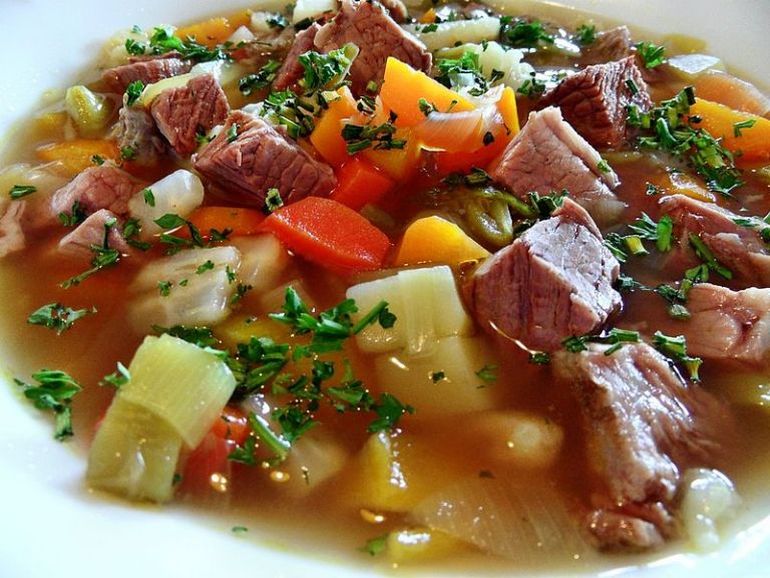
Much like curry, the stew is a beautiful mess of vegetables, meat, poultry, and myriad other ingredients, cooked slowly over gentle heat. The resultant concoction is a riot of color, flavors, and aromas that are much more sophisticated than plain old soup. Although water is the most common stew-cooking liquid used, some recipes call for wine and even beer.
While curry focuses more on building a depth of flavor by adding different spices, stew recipes are generally simple and rely on only basic seasoning. The practice of simmering the meat in liquids over the fire until tender dates back 7,000 to 8,000 years – which makes it one of the world’s oldest food recipes.
Interestingly, ancient Mesopotamian cuneiform tablets from the Yale Babylonian Collection have recipes for hearty stews. One of these ancient tablets (from circa 1730 BC), written in Sumerian, mentions the Elamite broth (mu elamutum) as a ‘foreign dish’ (zukanda) having ingredients like kurrat (Egyptian leek), cilantro (fresh coriander leaves), dill, and garlic mixed with sour milk and lamb blood.
Another ‘native’ dish from ancient Mesopotamia, possibly denoting the world’s oldest known food recipe, is the Tuh’u. This Sumerian mutton stew, 3750 years old, comprised a spectrum of elements ranging from mutton chunks, sheep fat, and leek to cumin, shallots, and beetroots.
Archaeological findings indicate that many Amazonian tribes used the hard exterior shells of large mollusks as utensils for making stew. To prepare a similar Scythian dish (approx. 8th to 4th centuries BC), wrote ancient Greek philosopher, Herodotus, one has to:
… put the flesh into an animal’s paunch, mix water with it, and boil it like that over the bone fire. The bones burn very well, and the paunch easily contains all the meat once it has been stripped off. In this way, an ox, or any other sacrificial beast, is ingeniously made to boil itself.
The Old Testament is also rich with references to these types of ancient recipes. In Genesis, for instance, Esau and his brother Jacob paid off the dowry that Isaac incurred when he married Rebecca by offering a pot of meat stew. There are also several mentions of lentils and grain-based stews.
Apicius: De Re Coquinaria, the extant 4th century BC Roman cookbook, contains a number of detailed recipes about fish as well as lamb stews. The earliest mention of ragout, a French stew, lies in the 14th-century book by chef Taillevent called Le Viandier.
In the 16th century, the Aztecs partook in a gruesome practice of preparing stews with dried maize, (possible bits of) human flesh, and chillis, also known as tlacatlaolli – although if the concoction was actually consumed is up for debate. Some historians have hypothesized that flesh was a ritualistic aspect of the dish, which was not eaten by everyone. An important written record of this practice can be seen in a 1629 treatise by Hernando Ruiz de Alarcón.
As for other stew dishes, pottage – sometimes referred to as a thick stew made with a variety of things like vegetables, meats, grains, and fish, has been continuously consumed all over Europe since the Neolithic Age. It was widely known as the poor man’s food, thanks to the easy availability of its ingredients.
Tamales, circa 5000 BC
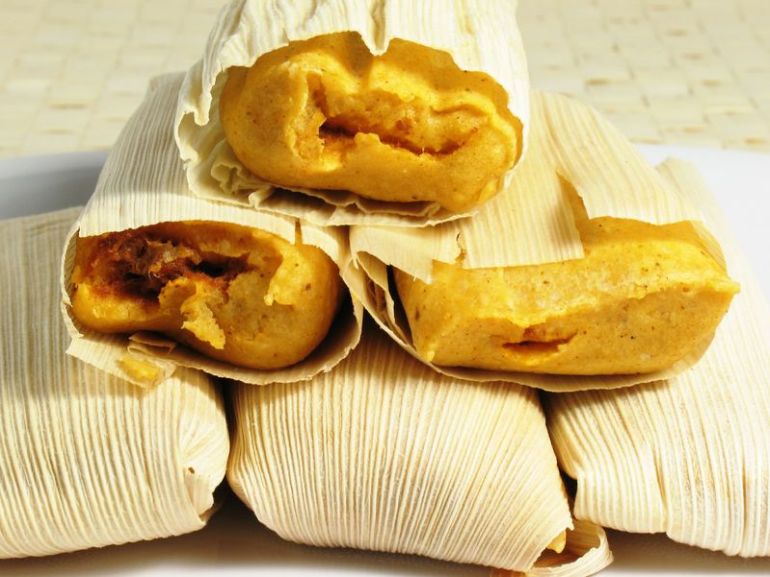
Soft parcels made from masa (a type of dough) and filled with fruits, meats, and vegetables among other things, tamales are a popular Mesoamerican dish that has an enduring history. First prepared somewhere between circa 8,000 and 5,000 BC – thus boasting their legacy as one of the oldest food items, tamales were later widely consumed by Olmecs, Toltecs, Aztecs, and later Mayans.
Steamed gently inside corn husks or banana leaves, they were commonly used as portable edibles by travelers and soldiers back when preserving food for a long duration was difficult.
Historically, dough-based food was served at festivals and feasts and usually contained a variety of fillings, including minced rabbit, turkey, frog, fish, flamingo, eggs, fruits, beans, and so on.
Many pottery fragments dating back to circa 200 – 1000 AD have been discovered in the region bearing the Classic Maya hieroglyph for tamales. Today, tamales are eaten all across Mexico, Central America, South America, the Caribbean, the United States, and the even Philippines.
Pancakes, circa 3300 BC

Around the world, pancakes are a quintessential breakfast food, often consumed with fruits, chocolate, syrup, and a variety of other toppings. It refers to any flat, thin cake made from a starchy batter and cooked in a frying pan or griddle.
Depending on the place of origin, pancakes can be very thin and crêpe-like (as in France, South Africa, and Belgium among others), made from banana or plantain (like kabalagala in Uganda), and even fermented rice (such as dosa in South India).
Tracing the history of pancakes, however, leads us back to Otzi the Iceman, who was alive sometime circa 3,300 BC. His naturally-mummified corpse, the oldest in all of Europe, was discovered in 1991 in the Italian Alps.
Analysis of the body, according to historians, has uncovered a wealth of information about the Neolithic diet. At the 7th meeting of the World Congress on Mummy Studies, researchers revealed that Otzi’s last meal likely consisted of alpine ibex and red deer meat, along with einkorn wheat pancakes.
They argued that the traces of charcoal found in the 5,300-year-old man’s stomach, in turn, suggest that the food was cooked over an open fire. In essence, the seemingly ubiquitous pancakes are one of the oldest food items known to us.
Ancient Greeks widely consumed pancakes, who called them tagenias or teganites derived from the word tagenon (meaning ‘frying pan’). They were cooked on a clay griddle over an open fire. In the works of 5th-century BC poets Magnes and Cratinus, we find the earliest mention of these pancakes, which were made using wheat flour and olive oil and served with curdled milk or honey. Much like the modern version, tagenites were commonly eaten for breakfast.
The 3rd-century philosopher Athenaeus talked in his book Deipnosophistae about a similar food (known as statitites), featuring spelled flour and adorned with sesame, cheese, or just honey. Ancient Romans enjoyed similar creations, which they called alia dulcia (meaning “other sweets” in Latin).
Interestingly, the 4th-century Roman cookbook Apicius actually contains a detailed technique for a pancake-like griddlecake, prepared from a mixture of egg, flour, and milk and drizzled with honey. The first use of the English word “pancake” quite possibly took place sometime during the 15th century.
Curry, circa 2600 – 2200 BC
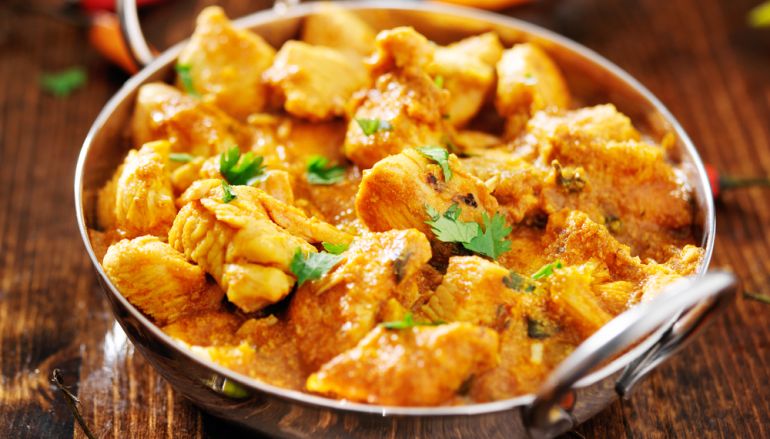
Nothing is more quintessentially Indian than curry. Originating in the Indian subcontinent, this aromatic food is a medley of colors, spices, and herbs. Spices commonly used in curry include cumin, turmeric, pepper, coriander, garam masala, and so on. Interestingly, curry powder is primarily a product of the West, first prepared in the 18th century for officials of the British colonial government in India.
They can be vegetarian (using lentils, rice, or vegetables) or fish, poultry, or meat-based. Ever since the recipe was brought to the United Kingdom some 200 years ago, curry has become one of the most recognized icons of British culture. According to National Curry Week, the popularity of this dish translates to its regular consumption by over 23 million people across the globe!
Etymologists believe that “curry” originally came from kari, a word in Tamil that means sauce or gravy. The history of this preparation goes back more than 4,000 years to the Indus Valley civilization, where people often used the stone mortar and pestle to finely grind spices such as fennel, mustard, cumin, and others.
In fact, excavations at Harappa and Mohenjodaro have unearthed pottery fragments with traces of turmeric and ginger, belonging to the period between 2600 – 2200 BC, thus making curry (or at least the predecessor to curry) one of the oldest food items in the world. As pointed out by historians, the curry was often eaten with rice, which was already being cultivated in the area.
Sumerian tablets that have survived also talk of a similar food recipe for meat in some kind of spicy gravy and served with bread, as early as 1700 BC. The Apicius cookbook of the 4th century AD contains many meat-based dishes that were cooked in a similar fashion, with the use of ingredients like coriander, vinegar, mint, cumin, and so on.
Authored in the 1390s, The Forme of Cury is significant for possessing the earliest reference to the word “cury”, though it was taken from the French term “cuire” for cooking. With the arrival of the Portuguese in Goa in the 15th century as well as the Mughals in India in the early 16th century, the curry underwent multiple revisions.
In a way, the dish’s evolution represents the many cultural influences that have colored the history of the Indian subcontinent. In case you are wondering, the oldest surviving curry recipe in English can be found in the 1747 book by Hannah Glasse called The Art of Cookery.
Cheesecake, circa 2000 BC
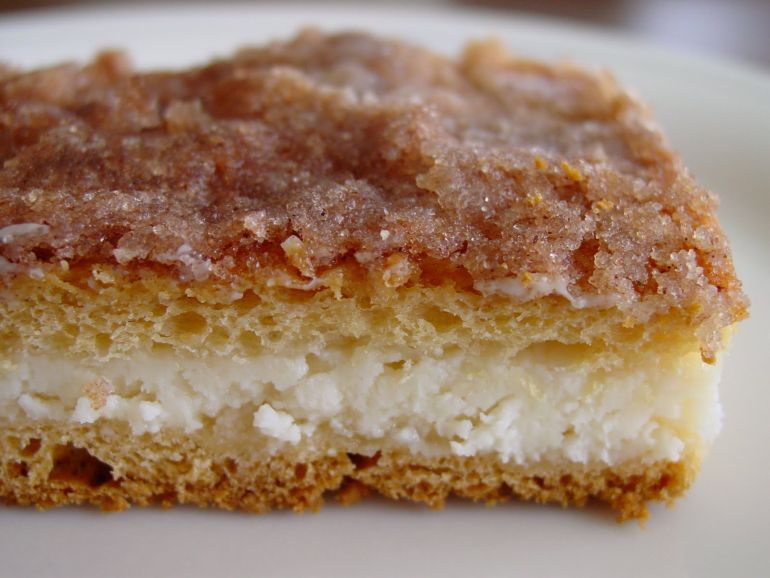
Dessert lovers like us often find themselves dreaming about the rich and decadent cheesecake. This creamy and delicious recipe usually features a thick, luscious layer of sweetened cheese and a buttery biscuit base or crust.
While the all too famous American version requires cream cheese, which was invented only in 1872 by dairyman William Lawrence, cheesecakes were originally the brainchild of ancient Greeks, who used a simple mixture of honey, flour, and soft cheese to make a light, subtly-flavored cake often served at weddings and other festivities.
Archaeological excavations in the last century have uncovered broken pieces of cheese molds dating as far back as 2000 BC, thus making cheesecake one of the oldest food recipes. Some historians believe that the very first “cheesecakes” might have been prepared in Samos, a Greek island that has been continuously inhabited for more than 5,000 years.
In fact, the dessert was offered to the athletes participating in the first Olympic games of Greece, circa 776 BC. The earliest written mention of this confection can be found in a 230 AD book by the ancient Greek author Athenaeus.
Following the Roman conquest of ancient Greece in 146 BC the cheesecake was adopted by the Romans and turned into something even more delectable with the addition of eggs as well as crushed cheese. The baked food item, called savillum, was often flavored with lemon or orange zest, something that continues to be done even to this day.
Historical records show that the oldest extant cheesecake recipe can be found on the pages of Marcus Cato’s De Agri Cultura. Later, it made its way to Europe and, is rumored to have been one of Henry VIII’s favorite desserts.
Pilaf, circa 1000 – 500 BC
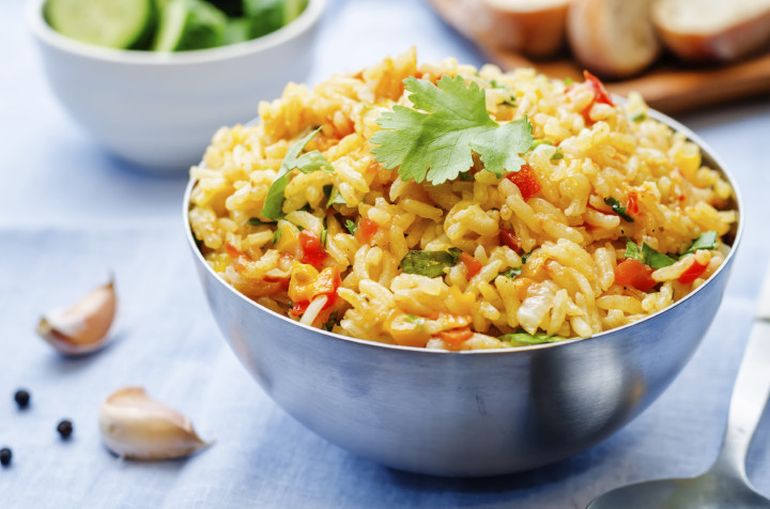
Although the bread was one of the oldest food items man prepared nearly 30,000 years ago, the more complicated varieties like stuffed bread or pastry started appearing much later. By comparison, rice has a long history of being used in rich, flavorsome, and more intricate preparations.
Pilaf, for instance, is an ancient food recipe made by cooking rice, vegetables, and animal protein in a broth seasoned with a number of different spices and herbs. Common ingredients include chicken, pork, lamb, fish, seafood, carrots, etc. Called by different names, depending on the country of origin, pilaf is widely consumed across the Middle East, Central and South Asia, East Africa, the Balkans, and so on.
Etymologically, “pilaf” comes from the Persian polow, while the term pulao (Indian version) has its roots in the Sanskrit word pulaka (meaning “ball of rice”). Historically, the paddy was first domesticated in China over 13,000 years ago and later in India. The people of ancient Persia started cultivating it as a crop between 1,000 and 500 BC.
This paved the way for the first pilaf recipe, which soon spread over other parts of the Middle East as well as Central Asia. In 328 BC, when Alexander the Great conquered the Sogdian city of Samarkand (now in Uzbekistan and Tajikistan), he actually feasted on pilaf. Soon, the recipe was taken over to Macedonia and then to different parts of Europe.
Around the same time, a similar rice preparation called pulao sprung up in India. In fact, some of the earliest mentions of this dish (in written history) can be traced back to the epic text of Mahabharata (as early as 400 BC) as well as certain ancient Sanskrit scriptures like Yajnavalkya Smriti (3rd to 5th century AD).
The arrival of Muslims in India (as early as the 7th century AD) further enriched one of the world’s oldest food recipes, with the addition of saffron and other aromatic spices. This is basically what is called biryani, a type of Mughlai preparation in which the rice, meat, and vegetables form distinct layers and was served hot. The Spanish paella is believed to have descended from the original pilaf recipe, as well.
Rice Pudding, circa 400 BC
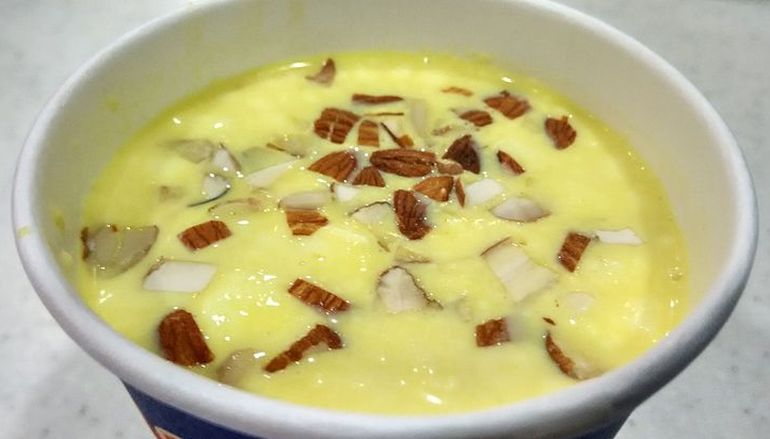
For the uninitiated, kheer is a wonderfully rich and creamy milk-based dessert belonging to Indian cuisine. Often served at festivals, wedding ceremonies, and even temples, it is believed to be the predecessor of European rice pudding. In the Indian subcontinent, it is known by many names, including payasam, payesh, phirni, and fereni among others.
In fact, payasam actually comes from payasa meaning milk. Similarly, the word “kheer” is a modified form of the Sanskrit word ksheer for milk or kshirika (meaning a dish prepared with milk). Coming to its recipe, kheer is prepared by cooking rice, vermicelli, or broken wheat in sweetened milk enriched with ghee and aromatic spices like cardamom and sometimes even saffron. For special occasions, it is sometimes garnished with cashews, almonds, and pistachios.
Some historians believe that kheer is one of the world’s oldest food items, and was possibly one of the concoctions of ancient Ayurveda. The earliest mentions of this food recipe date as far back as 400 BC in the epic texts of Ramayana and Mahabharata. Firni (or fereni) is a close variant of kheer that was created by the people of ancient Persia.
Unlike kheer, firni is made from roughly ground rice, which is then boiled in milk until completely mushy. Served cold, this dish is usually infused with cardamom, saffron, and rosewater. In fact, the Persians were the first to add rosewater into rice pudding; something that was later adopted by Indians. In the 1999 book Oxford Companion to Food, Alan Davidson writes:
The Persian version of the food, sheer birinj, according to Kekmat…was originally the food of angels, first made in heaven when the Prophet Muhammad ascended to the 7th floor of Heaven to meet God and he was served this dish.
During the reign of the Cholas in Southern India (between 300 BC and 1279 AD), kheer was commonly offered as food to the gods at any kind of religious ceremony. Historical records show that payas, a version of kheer first made in the Indian state of Orissa has been a popular sweet dish in the city of Puri for the last 2,000 years or so.
According to some experts, the Bengali payesh is also a pretty old recipe. In fact, it is believed that spiritual leader Chaitanya actually took with him a pot of gurer payesh (jaggery-sweetened payesh) on his trip to Puri in the 16th century.
Shola (or sholleh) is a similar rice pudding that first appeared in the Middle East, Afghanistan and Iran, and was later taken to Persia by Mongolians in approximately the 13th century AD. Rice as grain was also known to Greeks as well as Romans and was often imported from Egypt, western Asia, and other places. However, the birth of modern-day rice pudding occurred only after paddy was introduced as a cultivable crop in Europe sometime between the 8th and the 10th centuries.
Baked rice pudding, flavored with nutmeg, was first made in the 16th century and quickly began a popular sweet treat. The 1596 book The Good Huswifes Jewell by Thomas Dawson features one of the oldest food recipes of baked rice pudding and it goes as follows:
To make a Tart of Ryse… boil your rice, and put in the yolks of two or three Egges into the Rice, and when it is boiled put it into a dish and season it with sugar, cinnamon, ginger, butter, and the juice of two or three Oranges, and set it on the fire again.
Fish Sauce, circa 4th century BC
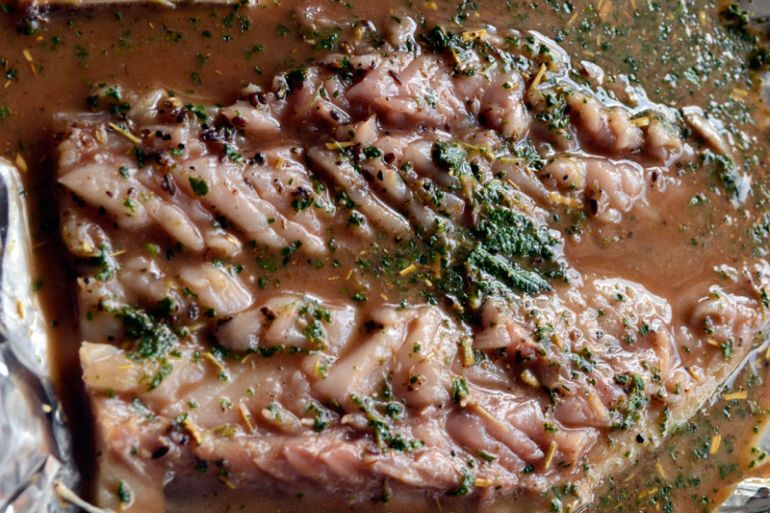
Fish sauce (and its associated umami) is synonymous with East and Southeast Asian cuisines, especially in places like Thailand, Vietnam, Laos, Myanmar, Cambodia, Korea, and even Japan. As its name suggests, fish sauce is prepared by fermenting fresh or dried fish with large amounts of sea salt. Anchovies are one of the most common types of fish used to make Asian fish sauces.
There is a multitude of regional varieties, each featuring different sets of ingredients as well as distinctly-unique tastes. In addition to being used as a condiment, fish sauce is often mixed with herbs and spices and turned into dipping sauces. In fact, written records confirm that sauces made from fermented seafood have been in use in certain parts of China for the last 2,000 years or so.
One thing that has long puzzled historians is that the origins of fish sauce took root not in Asia, but actually in Europe. Between the 3rd and 4th century BC, ancient Greeks started to make a fish sauce preparation known as garum, which was later adopted by Romans and even Byzantines.
Named after an ancient type of fish garos by Roman naturalist Pliny the Elder, this condiment was made by combining fish innards and blood with salt and letting it ferment until it releases a pungent-smelling liquid. Like modern-day soy sauce or ketchup, this curiously concocted food item was added to dishes at the end of cooking.
With the arrival of Romans, a slightly different version of the garum, called liquamen, came into use. According to some historians, it differs from garum in that it was made by fermenting an entire fish and not just the insides. In that respect, it can be considered a predecessor of present-day Southeast Asian fish sauce.
By the 4th century AD, liquamen became extremely popular across the ancient Roman Empire, often taking the place of salt in recipes. The Apicius cookbook, for instance, contains several food recipes that require liquamen or garum for enhancing the flavor. Claudio Giardino, an archaeologist from Italy, stated:
According to the Roman writers, a good bottle of garum could cost something like $500 today. But you can also have garum for slaves which is extremely cheap. So it is exactly like wine.
Archaeologists have discovered remnants of huge garum factories along coastal regions in Spain, Portugal, and even the northern parts of Africa. In fact, jars containing garum remains in a few of these factories actually helped researchers determine the date of the eruption of Mount Vesuvius and the consequent destruction of Pompeii. A modern version of garum, made from anchovies and currently in use in Italy, is Colatura di alic.
Burger, circa 4th century AD
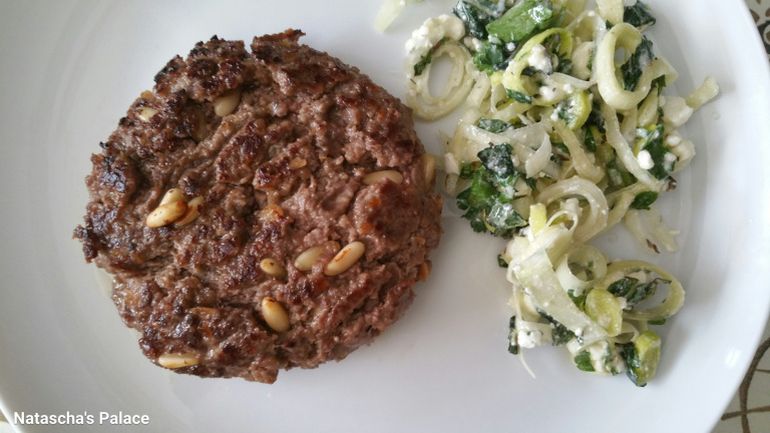
Burgers are emblematic of the modern fast-food phenomenon. Sandwiched between two soft slices of the bun and embellished with cheese, bacon, lettuce, tomato, onion, mayonnaise, and even pickles, this sumptuous meat patty is loved unanimously across the globe, ever since it was introduced in the United States by the 1900s.
It was widely popularized by street vendors and was one of the first American fast-food items. Although the origins of this iconic recipe remain murky to this day, some historians believe that it can be traced back to isicia omentata, an ancient Roman beef preparation that dates back to the circa early 4th century AD – thus potentially being one of the oldest food items in the world.
The 1,500-year-old food recipe, which has survived in the extant ancient Roman cookbook Apicius: De Re Coquinaria, involved mixing the minced meat, condiments, pine nuts, white wine, and the famous Garum fish sauce, and cooking the resultant patties over open fire. Speaking about the dish, UK-based food historian Dr. Annie Gray said:
We all know that the Romans left a huge mark on Britain, fundamentally altering the British diet forever. Street food became available en masse, and many of our favorite foods were introduced, including Isicia Omentata, which can be seen as the Roman forefather to today’s burger. This ‘burger’ was decidedly more upmarket than many of today’s offerings and is richer and more complex than the plain beef version most common today.
Honorable Mention – Cakes, circa 3rd Millenium BC
Cakes have a rather unique history in the sense that the first cakes were probably slight variations of bread in very ancient times. However, cake, as a specific item was possibly the cultural invention of ancient Egyptians – as they made a dish of unleavened bread that was baked on round stone and sweetened with honey.
The distinction between cakes and bread was also made to some degree in ancient Greece. This can be theorized from the word plakous, which literally meant ‘flat’ and was used to denote smaller ‘bread-like’ sweet treats packed with nuts and honey. The heavier variant of this sweet cake was known as the satura. Furthermore, the Greeks also indulged in maza. These were barley cakes made from barley, milk, and wine, and topped with figs and grapes molasses.
During Roman times, another variant based on the plakous was known as the placenta – but this recipe was more like cheesecake (discussed later in the article). The Greco-Roman tradition of culinary innovation can also be discerned from the enkythoi – a flat, molded, spongy cake, a recipe for which appeared in Athenaeus’ Deipnosophistae, published in 3rd-century AD.
As for the origin of the word ‘cake’, it is derived from the Norse ‘kaka‘. To that end, by the Anglo-Saxon times, ‘cake’ as a term was possibly used interchangeably for smaller bread. However, in medieval times in Europe, cakes were perceived exclusively as luxury items – made with the finest and most expensive ingredients. By the 13th century, many German kids also celebrated their days of birth (kinder fest) with candle-lit birthday cakes.
And by the 17th century, we also saw the rise of icings on cakes, usually made from a boiled mixture of sugar, egg whites, and some flavorings. Lastly, in the next century, yeast was mostly replaced by what we know as the quintessential modern raising agent for cakes – beaten eggs.
Featured Image Source: The Great Courses
And in case we have not attributed or misattributed any image, artwork, or photograph, we apologize in advance. Please let us know via the ‘Contact Us’ link, provided both above the top bar and at the bottom bar of the page.
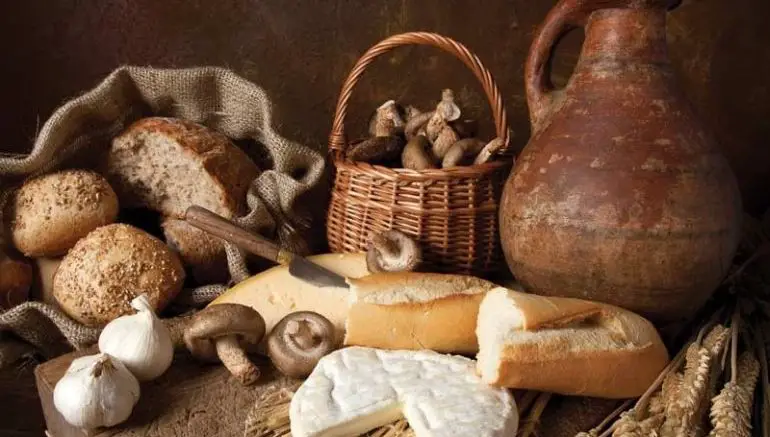




Be the first to comment on "Fascinating Oldest Historical Foods Still Eaten Today"